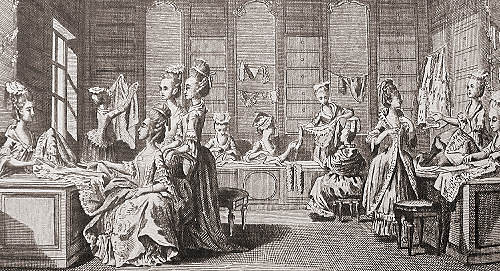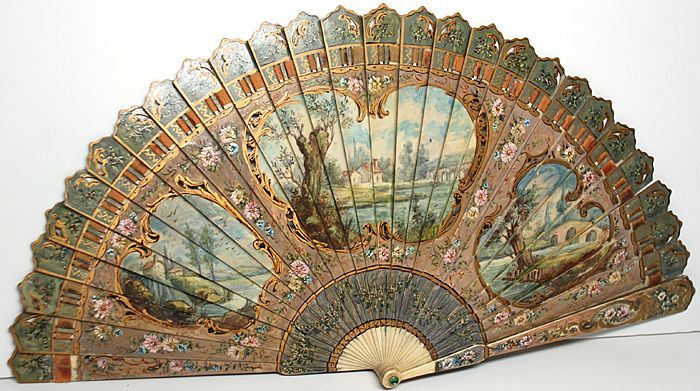 Becoming closely reacquainted with “Tom Jones,” and thus
the mid-eighteenth century has reminded me of a few things.
Becoming closely reacquainted with “Tom Jones,” and thus
the mid-eighteenth century has reminded me of a few things.
First, that I love that era. I’m as in love with it as I was
when I discovered it at the age of nine, as in love as when I wrote my first
novel set in the era at the age of thirteen. Now, sadly lost to posterity. I wrote
it on the plastic toy typewriter that I got one Christmas. I learned to type in
secret so I could do the story, and my parents soon swapped the toy typewriter
out for a portable manual version. I wore it out. I read voraciously, and
bought another typewriter. And in case you’re wondering, I learned to type in
secret because at the school I attended, if you typed you were branded “secretary”
and the careers people stopped worrying about you.
 Luckily that story has long gone, and the others I wrote afterwards.
I recounted the stories in breathless detail to my schoolfriends, who listened,
some politely, some impatiently and a few with interest. Story of my life, if
only I’d known it then.
Luckily that story has long gone, and the others I wrote afterwards.
I recounted the stories in breathless detail to my schoolfriends, who listened,
some politely, some impatiently and a few with interest. Story of my life, if
only I’d known it then.
The working class imperative for a “real job” followed, and I
took the university route, ending my working career as a marketing manager for
an fmcg (fast moving consumer goods) market. I had an epiphany then. I was
sitting in the office, writing a program with detailed statistical analysis to
decide which flavour of powdered pudding mix should go into which stores that
month. It was nine pm, and I had no energy for a social life. And I thought, “Why
am I doing this?” The answer was that it was well paid. That was it. And I didn’t
have time to spend the money properly, by which I mean sauntering around shops
hunting up bargains and taking my time deciding what to buy. One of life’s
pleasures. One my Georgian forebears knew only too well.
I went in a circle. I carried on working, but went home,
bought an electric typewriter and wrote another book. I got the bug again. And guess
what, it was a historical. Up to that point, I’d only written to amuse myself
and to satisfy that need inside me to get stories down on paper. Writers put
this urge in whimsical ways, like they have characters shouting at them, or
people urging them to write, but basically, that’s what it is. The need to tell
stories. Weird, but no weirder than the desire to chip away at a rock until a
shape emerges, or take a brush and daub at a blank canvas.
 So, shopping. I get a great deal of pleasure from shopping,
offline and on. I don’t make decisions quickly, and I drive my family mad,
standing in front of display deciding if I should go with this or that colour,
this or that option. But I enjoy it. And so did our Georgian ancestors. In fact,
I don’t think there’s been a time when shopping wasn’t an enjoyable activity to
a decent percentage of the population. I’m not sure about the ancient
Egyptians, but hey, it takes effort to look that good, and you’re not telling
me that one brand of kohl was no better than another, or that it might not be
fun trying them out and deciding on preferences.
So, shopping. I get a great deal of pleasure from shopping,
offline and on. I don’t make decisions quickly, and I drive my family mad,
standing in front of display deciding if I should go with this or that colour,
this or that option. But I enjoy it. And so did our Georgian ancestors. In fact,
I don’t think there’s been a time when shopping wasn’t an enjoyable activity to
a decent percentage of the population. I’m not sure about the ancient
Egyptians, but hey, it takes effort to look that good, and you’re not telling
me that one brand of kohl was no better than another, or that it might not be
fun trying them out and deciding on preferences.
The Georgians had bow-fronted shops. Some of them still
exist, this being after the Great Fire wiped out the previous generation of
shops, all but the row in High Holborn, and even those had bow fronts added. Nice
big windows for staring and imagining, and deciding. In the Georgian era, a “toyshop”
was for adults. It contained delicious and expensive trinkets like fans,
snuffboxes and the like, tokens lovers could buy for each other, items of
appreciation a would-be suitor could buy for his lady love. The trinkets that
have survived are largely under glass these days, which seems a shame. What was
designed as something exquisitely frivolous, to be handled and enjoyed, is now
sacrosanct and precious, the fan spread out in a special case and kept out of
direct sunlight, instead of being fluttered before a pretty face, its spangles
catching the light and flashing its “look at me” welcome.
 A few years ago I attended a seminar in London held by the
fabulous Lucy Inglis. What she doesn’t know about Georgian London, isn’t worth
knowing. It was a hot day and most of the attendees were historical novelists, or
more precisely, novelists of historical romance. So half way through, after the
windows were opened and water drunk, out came the fans. Most writers of Georgian fiction tend to have one about their person. Just ask one. Fans are incredibly
useful, much better than the nasty plastic electric hand-helds, more efficient,
and what’s more, prettier. Even better, they work off a calorie or two. I have several, and when people go to Spain, I get
them to bring me fans back. Those wooden filigree ones that are sadly so
fragile, but great to use and cheap enough to discard when broken. Or, in my
case, use for doll’s house projects.
A few years ago I attended a seminar in London held by the
fabulous Lucy Inglis. What she doesn’t know about Georgian London, isn’t worth
knowing. It was a hot day and most of the attendees were historical novelists, or
more precisely, novelists of historical romance. So half way through, after the
windows were opened and water drunk, out came the fans. Most writers of Georgian fiction tend to have one about their person. Just ask one. Fans are incredibly
useful, much better than the nasty plastic electric hand-helds, more efficient,
and what’s more, prettier. Even better, they work off a calorie or two. I have several, and when people go to Spain, I get
them to bring me fans back. Those wooden filigree ones that are sadly so
fragile, but great to use and cheap enough to discard when broken. Or, in my
case, use for doll’s house projects.  Snuffboxes—not for snuff, but I’ve always had a weakness for
boxes, and pretty little boxes are the best of all. Now we’re into
miniaturisation, what a fun place to keep micro SD cards and those little
button batteries. More stylish than a plastic case, hmm?
Snuffboxes—not for snuff, but I’ve always had a weakness for
boxes, and pretty little boxes are the best of all. Now we’re into
miniaturisation, what a fun place to keep micro SD cards and those little
button batteries. More stylish than a plastic case, hmm?
One of the world’s greatest mysteries to me is with
everything getting smaller, why do we need such big bags? But we do.
Lynne Connolly
http://lynneconnolly.com

3 comments:
I really enjoyed this post, Lynne. I think the arrival of plate glass and gas lighting in the mid-19th century must have had an enormous effect on how goods were displayed.
George Augustus Sala in 'Twice around the Clock' (1859) waxes lyrical about the 'tableaux of poses plastiques' of mannequins in plate-glass cases, carefully lit by gas-lights in the evenings.
An 18th century lady couldn't enjoy window-shopping of an evening in the same way. Still, the 18th century was a period when the world was opening up and exotic goods were coming in from all over the world. That must have been exciting!
Great post, Lynne! I definitely agree that shopping is a wonderful pastime. I love wandering along Burlington Arcade and imagining what it must have been like in Regency times. I'm sure it would have been great!
I love wandering!
Pawn Jewellery
Post a Comment